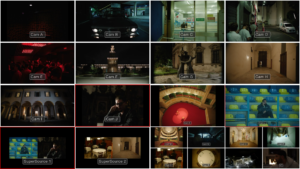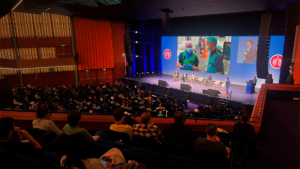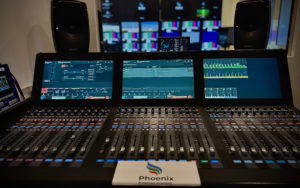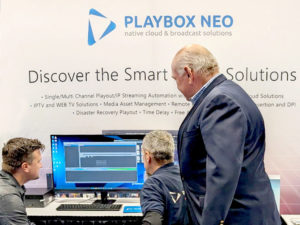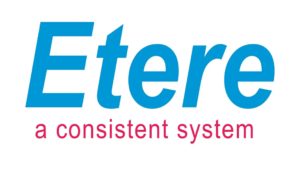
Jonathan Morgan, Managing Director, Object Matrix
Technological transformation offers a host of benefits: it streamlines workflows, reduces inefficiency, and makes life easier for media professionals. So why is such beneficial change frequently met with resistance?
Decision making at an organisational level can sometimes become dehumanised, especially with regards to technology and infrastructure. Senior stakeholders make assessments based on predefined judgements, which in turn relate to budget constraints and efficiency. Often these judgements are set in stone before any work to improve company processes or infrastructure begins. But when overhauling workflows and rolling out next-gen technology, media organisations must not overlook a crucial factor. Even the most innovative systems will need buy-in from the humans that use them.
The fear of change
A wariness of invention and the change it brings, is nothing new. Humans are naturally cautious of anything different, and this tendency goes much further back than the latest advancements in cloud technology, automation, and AI. When bicycles came into widespread use in the 1890s they became “symbols of a changing culture”. Their use in Victorian England (especially by women) was discouraged by medical professionals, who raised concerns over a host of bizarre ailments, including skeletal issues, appendicitis, and even “bicycle face” – apparently due to muscular strain and a strong breeze! An 1894 article in The New York Times entitled “Lunacy in England”, commented that “there is not the slightest doubt that bicycle riding, if persisted in, leads to weakness of mind, general lunacy, and homicidal mania.”

Fear is an evolutionary trait that is hard-wired into us. It’s not the technology itself that causes the issue, but rather an understandable hesitation in the face of the unknown. Even when technology solves recurring problems, it can still be met with suspicion. That is the media transformation paradox. Next-gen technology might offer a number of benefits, but despite the common sense involved in adopting new solutions, change can still cause resentment. In the worst-case scenario, teams will start using workarounds to make the new media workflows feel more familiar, or even echo old processes.
Assessing the problem
The explosion of content over the last few years means that media companies are now inundated with assets to ingest, store, manage, and monetise. All of this puts a huge amount of pressure on professionals in the industry. Media teams need ways to work more efficiently, but conversely, many well established companies are dealing with a sunk cost fallacy. Teams continue to do something because of past decisions, so workflows stagnate and the content piles up. Time and money have been invested in the current system. Therefore, maintaining the status quo feels more manageable than bringing in new technology which could maximise value, but requires a transition period.

This represents a missed opportunity – and it’s not just about the bottom line. The right technology actually makes everyone’s life easier. Sticking with legacy LTO systems in a fast-turnaround workflow environment is an anchor dragging teams down. Media professionals will have become experts at managing daily tasks and are comfortable with large format removable storage platforms, such as LTO-7 and LTO-8. The thinking is that, while they may be cumbersome, they are at least familiar. Unsuitable storage processes might be wasting resources, but isn’t it better the devil you know?
Getting buy-in for a successful transition
The first step is to recognise that no-one likes to feel out of control – especially over changes that will affect their day-to-day working processes. Content processing and editing teams have developed an intuitive way of working, that has been built-up over many years. Even though current workflows are more time-consuming than the new process being implemented, a sense of comfort and consistency holds people back. Some of the more menial aspects of media processing are so familiar they happen on autopilot. So, for certain team members, change feels like having your hands tied behind your back.
New technology adoption at an organisational level is challenging, because the day-to-day is often overlooked. When learning anything new there is going to be a period of adjustment. So rather than pulling the rug out from under your creative team, make sure there is a consultancy process in place so people feel they can raise any concerns. This doesn’t just help keep human resources happy. Your end-users are extremely experienced with these workflows, and without a doubt they’ll be able to flag some of the nuances within your organisation that need to be factored in. Troubleshooting these quirks in advance will stop them causing you headaches at a later date. Often, the insights from individual team members will prove just as valuable as those from a Head of Post-production, a Technical Lead, or a Systems Manager.
Bringing your team along for the ride
With staff increasingly working both remotely and across multiple sites, the need to consolidate workflows and align processes is more important than ever. Object-based storage and archiving can connect disparate teams and streamline workflows. This approach gives media professionals a reassuring sense of control, because access to content can be self-served by editors, producers, and commercial partners, wherever they are based. It’s also crucial to maintain consistency around toolsets. Many editors are very loyal to their chosen workspace, so whether it’s Avid or Adobe, you don’t want a mutiny on your hands!
Hybrid storage offers the perfect bridging approach when implementing new technology. If done correctly, it provides full digital content governance, multiple media-based workflows, and can easily adjust to requirements by scaling capacity up or down. Most importantly the transition can be staggered to match the activity levels of a specific organisation, without requiring an expensive, all-consuming upgrade project. It’s very much a “soft strategy” rather than an overwhelming change. By limiting disruption and maintaining business continuity, work continues regardless of any outages that might occur.
New workflows certainly promise a bright future for the media sector. The right infrastructure will allow broadcasters and post-production studios to securely consolidate multiple tiers of storage, leverage metadata, and monetise the archive. Just don’t make the mistake of overlooking the individuals that contribute to your workflows. You’ll need to demonstrate that you value their opinion. Those media professionals will benefit from the technological change within your organisation, but ultimately, their buy-in will also define its success.



